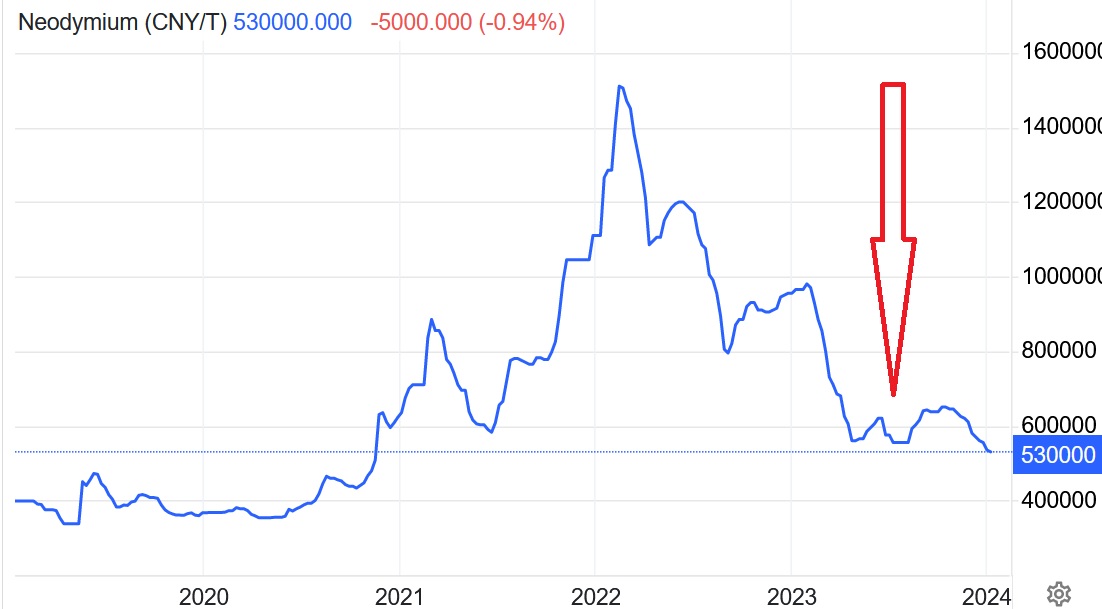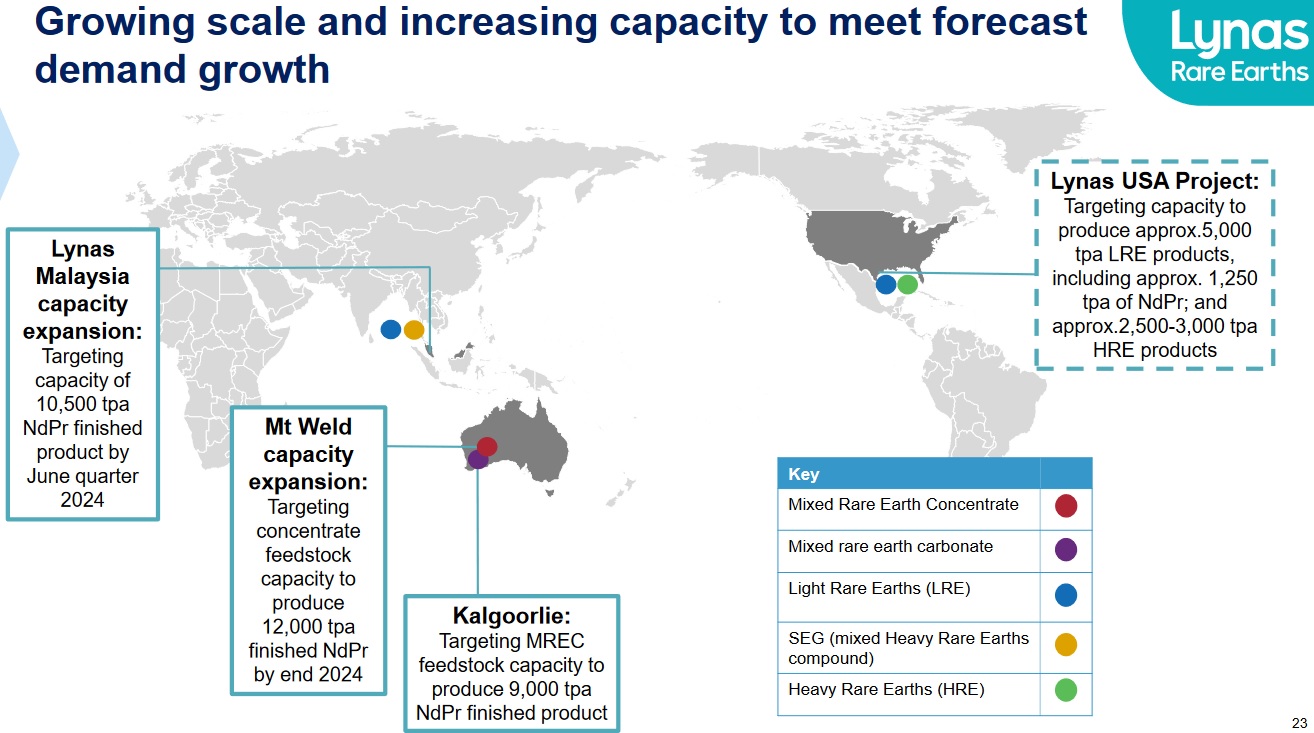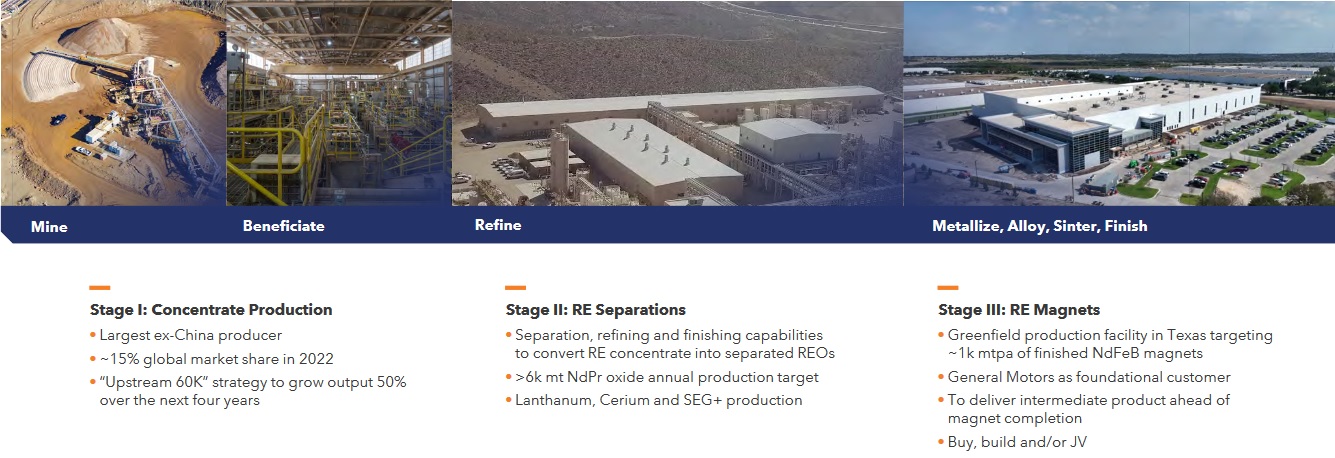Technology Metals Report (04.19.2024): Government Roles Escalate, Rinehart and the Market Go Bull on Copper
Welcome to the latest issue of the Technology Metals Report (TMR), brought to you by the Critical Minerals Institute (CMI). In this edition, we compile the most impactful stories shared by our CMI Directors over the past week, focusing on the significant shifts and investments in the critical minerals and technology metals industry. A notable development is the evolving dynamics of resource nationalism, particularly in Chile and Indonesia, where control over vital minerals like lithium and nickel is increasingly dominated by local governments. This shift challenges traditional Western dominance and marks a move towards a multipolar resource governance era. Adding to the market dynamics, Australia’s wealthiest, Gina Rinehart, has made aggressive moves into the critical minerals sector with her $120 million investment in Ecuador’s Linderos copper-gold project and significant stakes in rare earth companies, positioning her as a pivotal figure in global supply chains.
This week’s TMR Report also highlights several significant developments aimed at enhancing the supply chain and infrastructure of critical minerals. The U.S. Department of Energy has released a pioneering roadmap to integrate clean energy projects more rapidly into the nation’s electric grid, targeting a substantial reduction in project backlogs. In financial boosts, critical mineral projects in Queensland and South Australia have been pledged $585 million in government loans, emphasizing the growing commitment to fostering local industries and reducing dependency on international suppliers. Additionally, the closure of the Cobre Panamá copper mine has sparked a surge in copper prices, underlining the critical role of stable mineral supplies in maintaining economic stability and supporting green energy transitions. Each story is presented in chronological order to provide a comprehensive view of the week’s events, rather than by order of importance, ensuring readers receive a well-rounded perspective on the sector’s latest developments.
To become a CMI member and stay informed on these and other topics, click here
The Shifting Dynamics of Resource Nationalism as the Demand for Critical Minerals is Set to Soar: (April 18, 2024, Source) — As global demand for critical minerals like nickel, lithium, and rare earths surges, the dynamics of resource nationalism are evolving. Historically dominated by Western powers, control is shifting towards resource-rich countries asserting sovereignty over their natural assets. China’s longstanding monopoly on rare earths exemplifies this trend, leveraging resources for economic and strategic autonomy—a strategy now mirrored by Chile and Indonesia in their respective lithium and nickel sectors. Chile’s government, for instance, has moved to nationalize lithium extraction by partnering with SQM to form a national critical minerals company. Meanwhile, Indonesia mandates local processing for nickel, fostering a sustainable, self-sufficient industrial base. These strategic shifts are restructuring global supply chains, challenging traditional Western dominance and heralding a multipolar resource governance era. This realignment has profound implications for geopolitical dynamics and global power structures in resource management.
Billionaire Gina Rinehart Stakes Another Critical Minerals Claim: (April 18, 2024, Source) — Gina Rinehart, Australia’s richest person and head of Hancock Prospecting Pty Ltd., is diversifying her portfolio by targeting critical minerals, moving away from her traditional focus on iron ore. Her recent ventures include significant investments in South America and the rare earths market. Notably, she invested $120 million in Ecuador’s Linderos copper-gold project through a deal with Titan Minerals Ltd. (ASX: TTM), aiming for up to an 80% ownership. Additionally, she acquired a 49% stake in an Ecuadorian state-owned mining company. Rinehart also increased her influence in the rare earths sector by purchasing stakes in Lynas Rare Earths Ltd. (ASX: LYC) and MP Materials Corp. (NYSE: MP). Furthermore, she supported Arafura Rare Earths Limited (ASX: ARU) in Australia, which received a substantial government backing of A$840 million in grants and loans last month. Rinehart’s strategic investments mark her shift to a key player in the global market, enhancing supply chain security for technology and renewable energy resources.
DOE Releases First-Ever Roadmap to Accelerate Connecting More Clean Energy Projects to the Nation’s Electric Grid: (April 17, 2024, Source) — The U.S. Department of Energy (DOE) has unveiled a roadmap aimed at speeding up the integration of clean energy sources like solar, wind, and batteries into the national transmission grid, addressing the existing backlog of nearly 12,000 projects. This comprehensive guide, developed by DOE’s Interconnection Innovation e-Xchange (i2X), targets a variety of stakeholders, including transmission providers, state agencies, and equipment manufacturers. It proposes 35 solutions across four main areas: improving data access, enhancing the interconnection process, promoting economic efficiency, and ensuring grid reliability. The roadmap also sets forth ambitious goals for 2030 to facilitate the Biden-Harris Administration’s objective of achieving 100% clean electricity by 2035. These efforts are supported by DOE’s Grid Deployment Office and various funding opportunities aimed at fostering grid resilience and interconnection efficiency.
Critical minerals projects in central Queensland and South Australia to receive $585 million in government loans: (April 16, 2024, Source) — Critical minerals projects in Queensland and South Australia are set to receive $585 million in federal government loans, marking a significant push by the Albanese government towards a “future made in Australia.” A major portion, $400 million, will fund Australia’s first high-purity alumina processing facility in Gladstone, central Queensland. This investment comes via the $4 billion Critical Minerals Facility, Northern Australia Infrastructure Facility, and Export Finance Australia. An additional $185 million is earmarked to accelerate Renascor Resources Limited’s (ASX: RNU) Siviour Graphite Project in South Australia. These projects aim to bolster the production of minerals essential for lithium-ion batteries and renewable technologies. This initiative aligns with national strategies to enhance renewable technology capabilities and drive economic growth through local job creation and sustainable industrial development.
A $10 billion Panamanian copper mine has been sitting idle since November – and it’s part of why the metal’s price is surging: (April 16, 2024, Source) — The Cobre Panamá mine, a major $10 billion copper-producing site, has been inactive since November, significantly contributing to the global copper shortage. This closure has led to an 11% increase in copper prices this year, reaching a peak not seen in over a year. Operated by Canada-based First Quantum Minerals Ltd. (TSX: FM), the mine previously supplied 1.5% of the world’s copper, enough to build five million electric vehicles annually. The shutdown resulted from a tax dispute with the Panamanian government, which sought more favorable terms. This has exacerbated a copper supply crisis, with the Bank of America declaring that the lack of new mining projects is now severely impacting refined copper production. This shortage coincides with increased demand for copper in green energy projects, further driving up prices.
SRC Expects to Produce 400 Tonnes of Rare Earth Metals Per Year Beginning in 2025: (April 15, 2024, Source) — The Saskatchewan Research Council (SRC) has entered into a five-year agreement with Vietnam’s Hung Thinh Group to import up to 3,000 tonnes of rare earth carbonate annually starting in June 2025. This will enable SRC’s Rare Earth Processing Facility in Saskatchewan to produce about 400 tonnes of rare earth metals per year. These metals are crucial for manufacturing modern technologies such as cellphones, electric vehicles, and green technologies. The deal, which stems from Saskatchewan’s diplomatic efforts in Vietnam, positions SRC as a pioneer in North America with a fully integrated commercial rare earth processing facility. The Saskatchewan Government’s $71 million investment in the facility aims to boost the local and national resource sectors by enhancing mid-stream supply chain capabilities. SRC, a major Canadian research entity, expects this initiative to catalyze industry investment and growth.
U.S. Department of State Minerals Security Partnership (MSP) Aims to Support Biden Policies on Critical Minerals: (April 15, 2024, Source) — The U.S. Department of State’s Minerals Security Partnership (MSP) was established to advance President Biden’s policies on critical minerals and enhance supply chain security. Led by Under Secretary Jose Fernandez, the MSP collaborates with various countries and the European Union to foster sustainable mineral supply chains, prioritizing environmental, social, and governance (ESG) standards. The partnership focuses on diversifying supply chains, boosting investments, promoting high ESG standards in mining, and increasing recycling. Companies involved must meet stringent ESG criteria, including responsible environmental practices and ethical community engagement. Despite challenges such as varying international ESG standards, the MSP remains dedicated to “greening” economic activities and addressing climate change through global cooperation.
Tesla supplier Piedmont Lithium gets key North Carolina mining permit: (April 15, 2024, Source) — Piedmont Lithium (Nasdaq: PLL | ASX: PLL), a supplier to Tesla, has secured a crucial mining permit from North Carolina regulators to develop a significant U.S. lithium source near Charlotte. Despite the permit’s conditional approval, requiring a $1 million reclamation bond, the company faces ongoing financial challenges and local regulatory hurdles. The project, which could be a major U.S. lithium producer, is opposed by local residents due to environmental concerns. Additionally, Piedmont must obtain local zoning approval and substantial funding, estimated over $1 billion, potentially through U.S. Department of Energy loans. The state has imposed stringent conditions, including regular environmental monitoring and a modified waste storage protocol. The project’s progress hinges on overcoming local opposition and securing necessary permits and funding.
Glencore-backed nickel miner fails to secure financing after rising costs: (April 15, 2024, Source) — Horizonte Minerals PLC (TSX: HZM | AIM: HZM), backed by Glencore PLC (LSE: GLEN), is facing financial difficulties with its Araguaia nickel mine project in Brazil due to a significant increase in estimated costs, now exceeding $1 billion, and concerns about market oversupply from Indonesia. As a result, the company is considering options such as selling the mine, liquidation, or securing subsidiary-level financing, though none are expected to benefit shareholders significantly. Following the news, the company’s shares plummeted by 84%. This setback reflects broader challenges for nickel projects outside Indonesia, given the country’s dominant market position. Horizonte’s struggles highlight investor reluctance to finance high-capital, early-stage projects amid unfavorable market conditions dominated by Indonesian supply, affecting not only Horizonte but also other nickel producers worldwide.
United States and United Kingdom Take Action to Reduce Russian Revenue from Metals: (April 12, 2024, Source) — The United States and the United Kingdom have jointly announced new prohibitions aimed at reducing Russia’s income from metal exports, specifically aluminum, copper, and nickel. The U.S. Department of the Treasury, in coordination with the UK, issued measures to prohibit the importation of these metals into the U.S. and restrict their use on global metal exchanges and in derivatives trading. These actions are intended to follow through on commitments made in the G7 Leaders’ Statement to cut off revenue streams that support Russia’s ongoing military activities in Ukraine. Treasury Secretary Janet L. Yellen emphasized that the measures are targeted to undermine Russian revenue while minimizing negative impacts on allies. UK Chancellor Jeremy Hunt highlighted the collaborative nature of these efforts, stressing their importance in impeding Russia’s war capabilities. As a result, major metal exchanges like the London Metal Exchange and Chicago Mercantile Exchange will no longer accept newly produced Russian metals from April 13, 2024.
Investor.News Critical Minerals Media Coverage:
- April 18, 2024 – The Shifting Dynamics of Resource Nationalism as the Demand for Critical Minerals is Set to Soar https://bit.ly/3W63V28
- April 18, 2024 – Billionaire Gina Rinehart Stakes Another Critical Minerals Claim https://bit.ly/3U2G0xU
- April 17, 2024 – InvestorNews.com Offers Real Time Access through the Revolutionary IR Mobile App, Now Offered Through Stock Marketing Inc. https://bit.ly/3TYrwPz
- April 16, 2024 – Tuan Tran Joins the Critical Minerals Institute (CMI) as the Newest Board Member https://bit.ly/49DlucM
- April 15, 2024 – U.S. Department of State Minerals Security Partnership (MSP) Aims to Support Biden Policies on Critical Minerals https://bit.ly/3Ji332z
Investor.News Critical Minerals Videos:
- April 19, 2024 – Terry Lynch on Power Nickel’s ‘New Crown Jewel Discovered on its NISK Project’ https://bit.ly/3JrQT7k
- April 17, 2024 – Critical Metals’ Russell Fryer on the Rising Tide for Copper and Cobalt in Africa https://bit.ly/4aFoWFa
Critical Minerals IN8.Pro Member News Releases:
- April 17, 2024 – Gary Stanley, Former Director of the Office of Critical Minerals and Metals at the U.S. Department of Commerce, Joins the First Phosphate Advisory Board https://bit.ly/3UkxbAL
- April 17, 2024 – Successful completion of Institutional Placement to raise A$15M; Entitlement Offer to be undertaken https://bit.ly/3W2SKHl
- April 16, 2024 – Appia Files NI 43-101 Technical Report on Maiden Indicated and Inferred Mineral Resource Estimate for the PCH Ionic Adsorption Clay Project in Goias, Brazil https://bit.ly/3xAahwd
- April 16, 2024 – NEO Battery Materials Appoints Renowned Battery Industry Pioneer Mr. Ricky Lee as Lead Managerial Advisor https://bit.ly/3UikF4C
- April 16, 2024 – Fathom Intersects Rottenstone-Like Nickel Tenor in Drillhole AL24077 at the Albert Lake Project https://bit.ly/3JlIfY8
- April 16, 2024 – Appia Engages Generation IACP to Provide Market Making Services https://bit.ly/43XNEhv
- April 16, 2024 – F3 Intersects Radioactivity Across Multiple Zones https://bit.ly/442U0fv
- April 15, 2024 – Power Nickel Releases Initial Assay on New Crown Jewel Discovered on its NISK Project https://bit.ly/4bdvD1h





